http://vimeo.com/113871303
The television documentary 'After the Wave' screens in Australia on Sunday to mark the tenth anniversary of the Indian Ocean tsunami. This is the article that prompted producer Amanda Blue to go to work. A version first appeared in The Australian Magazine in 2005.
FRANKY GUN is pinned under the roof of a neighbor's bungalow by the swirling seawater. He knows he is about to drown.
Beneath the waves, he begins talking to God and is surprised to find himself using English, even though his native tongue is German.
Suddenly, the roof rises and Franky is lifted up with it. He gulps in air, then grabs hold of a passing mattress.
His prayer, ''I don't want to die, I don't want to die please,'' has been answered. Almost 900 metres from the home he shared with his parents before the tsunami struck, Franky lodges in a tree.
He climbs higher to safety, pulling his underpants up from around his knees and fighting off angry ants.
That Sunday morning, all along the 30 kilometer strip of holiday coast that runs north and south of the village of Khao Lak, thousands of people are in a similar state, fighting off the water, pinned between life and death.
Prayers are being offered up to God, Allah and the Lord Buddha, even by people who believed until that moment that they were non-believers.
The surging, grasping, scouring, grinding wall of liquid does not discriminate. It rips into five-star resorts favored by the rich and tears through primitive construction camps and flimsy fishing villages.
It breaks down doors, crashes through windows, then rapidly undermines and demolishes homes by the hundreds, among them those of scores of German and Swedish pioneers who, like Franky, moved to these beaches for the beauty and the peace.
The monster from the deep consumes large and small buildings of timber and brick and glass and is brushed aside only by reinforced concrete.
It turns the flesh and blood inhabitants of this serene shoreline into projectiles and bludgeons them in turn with washing machines and other household objects, prized furniture, floating vehicles and rubble torn from their own homes.
When the water eventually recedes, Franky sees several bodies hanging in trees around him. He climbs down and begins to search.
He finds death and destruction everywhere but no trace of the house he built with his own hands, except for the flat concrete foundations.
In the hours, days and months that follow, he also finds no trace of his parents. A hard-working pair from Germany's industrial heartland who raised their only son on a small income and a large slice of love, Ursula, 64, and Franz, 75, join the swelling ranks of the tsunami missing.
They were a close family and Franky hugged his parents that morning, as he did twice a day, every day. A couple of hours after their last embrace, water comes tumbling under the doors and Franky hears the thud-thud-thud of power poles toppling.
Strangely, it gives Franky some comfort that he shared the experience of his parents' final tormented moments, fighting in the torrent. He knows that he will never see them alive again. All he wants to do now is to say goodbye.
SOME 60 hours on, Karl Kent is flying to Phuket and thinking about Bali. The two islands, one in Thailand and the other to the south in Indonesia, have become linked by tragedy in the mind of the Australian Federal Police officer.
Suicide bombings at two nightspots on Bali in October 2002 brought a swift reaction from Australia, with Kent's colleague, Julian Slater, leading a task force that spent the next five months identifying the 202 victims.
Agent Kent alternated with Agent Slater on that assignment, interchanging every 17 days as part of a tag-team approach designed to keep their focus fresh.
Now, in Thailand, it is Agent Kent's turn to be first in. The specialists with him on the flight to Phuket have been assembled by staff from the AFP forensic major incident room after discussions between the Federal, NSW and Victorian police commissioners.
Fellow travellers include disaster victim identification specialists, intelligence operatives, non-police experts, pathologists and on-call dentists from private practice, as well as the new Australian Ambassador, Bill Paterson, and the diplomats who will assist families in their search for missing loved ones.
The ability to put together a rapid-response group, even amid the torpor of Australia's Christmas-New Year holiday, is one positive legacy of the Bali bombing.
By trade a forensic investigator, Agent Kent majored in physics at Sydney's University of NSW. He links clues to culprits with methodical analysis, directing the crime scene investigators who collect evidence from fingerprints, firearms and ballistics.
What he is about to experience is not a whodunnit, but a whoisit, an identity crisis on a scale that will stretch his imagination and the capabilities of everyone involved.
Agent Kent lands in Phuket, meets with the head of the Thai identification operation, police legal adviser Pol Gen Nopadol Somboonsap, then travels 120 kilometers north with an assessment team, across the bridge that links Phuket to the mainland and Khao Lak.
He sees the flattened resorts and villages, where soldiers and volunteers are still beachcombing for bodies, many of them lodged by the tide among debris in places that are difficult to access, and quickly concludes that the scale of the disaster ''goes way beyond what we envisaged.''
Tsunami victims by the hundreds lie spread under the tropical sun on the forecourts of two local Buddhist temples, Wat Yan Yau and Wat Bang Muang.
The enormity of the tragedy is now obvious and Agent Kent finds himself wondering how the dead, now clearly numbering in the thousands, can possibly all be given names, even by experts skilled in disaster victim identification.
He finds the task challenging, perhaps even daunting, and he seeks a suitable metaphor. Agent Kent asks himself, ''How do you eat an elephant?'' He knows the answer. ''One mouthful at a time.''
Most people, especially those in Thailand, where the elephant is a powerful totemic symbol, would find the prospect of eating one extremely distasteful, which only makes the Agent Kent's analogy all the more appropriate.
MIKE KEWLEY has a long-standing booking on a holiday flight to Thailand and not even a tsunami is going to prevent him proceeding as planned.
But instead of heading for the fun-in-the-sun coast, he catches a bus north from Phuket, stops at Wat Yan Yau, and volunteers to help.
Soon afterwards, a young Thai woman clad in bulky white beckons him to follow, and before long he too is donning a biological hazard suit, wellington boots, two layers of gloves and two masks, one over the other.
Industrial tape is wound around his wrists and boot-tops to seal the suit.
A much-traveled former policeman with a world view built on respect and understanding for people everywhere, Kewley has seen the photos of the bodies plastered on noticeboards outside the wat and he is filled with dread.
Before an hour has gone by, the dread is dissipating and instead his suit is filling with perspiration.
At first, he is unable to eat with the Thai team when they take a break for lunch. In spite of the grim nature of the work, he gradually overcomes the horror of contact with bodies that, in the normal scheme of things, should have long since been farewelled and buried or cremated.
As the days pass, he takes a more active role, washing mud and sand from clothes for the photographer, helping to identify brand-names on tee-shirts and pants, looking for tattoos and scars, searching for anklets and other jewelery.
One of his lasting memories is of a visit to the seafront remains of an exclusive resort, in search of clues.
In one room, he opens a wardrobe and finds racks of expensive clothes on hangers, exactly as they had been left. Except the owners are missing, and the top pockets of every jacket are full of sand.
A sports trainer and therapist back in Sydney, he dips into the pockets of the clothes on the bodies and finds credit cards and other items that have been missed in earlier checks, each one potentially the key that will give that body a name.
Kewley eventually reaches out, and with the hands that have massaged Australia's star swimmers and cyclists at Olympic and Commonwealth Games, he sponges down the faces of the dead, taking particular care with the children, manipulating macabre and twisted features to restore some normality, and perhaps even add a little dignity.
''I felt that I was helping each child to be released at an earlier date to its parents,'' he says later, having taken his own distinctive path to appreciation of the importance of identity.
AS THE SALT from the tsunami colors the once-lush green around Khao Lak a deathly brown, Agent Kent and others begin eating the elephant bit by bit, as fast as they can.
DVI teams are arriving from around the world, and the leaders meet. While the Australian's qualifications for heading an international operation are evident to most, some Europeans quibble.
Others are not even happy with the concept of a team effort. They'd prefer to hunt for their own nationals, even though the prospects of success in such a needle-in-a-haystack free-for-all are so remote as to be ridiculous.
Eventually, the Thais rule that any team opting to reject an international approach will be sent home, and Agent Kent is elected to be joint chief of staff with his Thai equivalent, under General Nopadol.
An executive committee is formed to co-ordinate the international side of the DVI operation in Phuket.
As the days pass, a makeshift hair salon appears on the forecourt at Wat Yan Yau, where the bodies once lay in the sun, perhaps in tribute to the famously punk red-tipped locks of Dr Portntip Rojanasunan, deputy director of the Central Institute of Forensic Science, who leads the Ministry of Justice identification process.
Apart from the Queen of Thailand and the royal princesses, the forensic expert is probably the most popular woman in the country. Her capacity to use DNA to solve difficult crimes and to question the judgment of police has made her the subject of rows of biographies, television specials and magazine spreads.
The Mr Happy Coffin Cafe also opens for business on the forecourt, offering the bodybag haulers and anatomy experts some humor and brief relief from the grim task of identifying the dead.
One volunteer, Sean Power, manages an up-market nightclub on Phuket. An Irishman, he comes north to work each day at the wat with his friend, real estate agent Wayne ''Red'' Graham, a Canadian.
Power is sitting having a late breakfast on an island beach at Surin when the tsunami strikes. That should mean certain death or at least a fight to survive, but the kill-or-kiss character of the big wave leaves Surin's sand merely washed clean, although at neighboring beaches, dozens perish.
''If I'm that lucky, I have a responsibility to help,'' he says. So, anxious to atone for his stroke of good fortune, Power rides north.
Some of the international teams, equally keen to find solace among the living, ride south at night to Power's Supper Club on Phuket.
One evening, talk inevitably turns to the bodies and a London Metropolitan policeman tells Power that working among bodies is not easy but the satisfaction in his job comes when identity is re-established, the remains become human once more.
That thought sustains Powers, ''Red'' Graham, and hundreds like them who are involved in the process.
They all have faith in the sentiment scrawled in large letters across a banner at Wat Yan Yau, ''We Will Take Them Home.''
INHERITED characteristics roll down the generations, defining us racially and in many other ways. No matter who we are or where we come from, our individual mannerisms, voices, style and physical characteristics, with the single exception of identical twins, set us apart from others.
In life, the differences are obvious. In death, we are less different. When there are many bodies, as in an aircraft crash or a natural disaster, there is a one-in-five chance that even a close relative will not be able to visually identify a loved one correctly.
Understandably emotional and grief-stricken, the urge among relatives and friends is to get the process over as fast as possible. No-one wants to spend more time in a mortuary than they have to, especially a primitive one.
On Bali in 2002, a newly married husband insists that one body is that of his young wife, to the point where he is on the verge of seizing her.
Eventually, DNA profiling proves he has identified the wrong woman. In another case on Bali, seven families claim the same body.
It's the same in Thailand after December 26. There are identifications that officials are able to prove to be wrong and multiple claims for the same body.
It happens on Phuket, the region's holiday resort hub, and on the once-beautiful island of Phi Phi, where hundreds also died, and in the wats of the district capital of Takuapa, where most of the thousands of bodies from the Khao Lak coast have been taken.
Initially, the bodies are sorted by race: Asian, Caucasian, Negroid. As time passes, the difficulty of determining even this much means that the number in the fourth category, Indeterminate, invariably grows.
Decisions have to be made about bodies that soon all take on a dull tan skin tone, no matter how pallid they once were.
As in life, so in death: judgments are inevitably made on the basis of how we appear at first meeting.
There is no way of knowing, for example, into which category a victim of mixed American-Vietnamese heritage will be placed.
How does the child of wealthy Swedish-Thai parents, playing happily in swimming trunks and tee-shirt when the sea rises up, differ in death from the child of poor Burmese laborers, who work in large numbers, legally and illegally, along Thailand's holiday coast?
Passports, driving licences, identity cards, credit cards . . . all the items that people usually tender to prove who they are, have been swept away, along with hundreds of their owners and their families, some never to be seen again.
Hair color, leg length and general appearance become important, but these people have been through a whirlpool of wreckage, both blunt and sharp.
They are battered, cut, bruised and swollen. At first, with bodies being harvested by the hundreds, the Thais assume that the bigger bodies are likely to be foreigners.
Mix-ups are inevitable. Big Thais become Caucasians. Small Europeans become Asians. As the international teams arrive, the thinking changes.
In a country where corruption is chronic and difficult to eradicate, police are either tong chin (straight and strict) or khang chin (on the take and power-hungry),
General Nopadol, leader of the identification operation, ranks as a reformer and a good policeman, definitely tong chin. Yet even he is concerned about the size of this elephant.
''There are so many bodies,'' he says at the Thai Tsunami Victim Identification center in Phuket City, the island's provincial capital.
''After a week, we realized that we are going to have to adjust our protocol. Because we can see that the [foreign DVI teams] are very professional, we decided that we should use their system.''
With masterly understatement, he adds, ''We had a little conflict with the team from the Ministry of Justice.
'' The ''little conflict'' evolves into an extended face-off with Dr Porntip for control of the Wat Yan Yau identification operation.
Dr Porntip has the trust of local villagers and the support of virtually every newspaper reporter in the country, but her methods differ.
She is portrayed as a national heroine, General Nopadol as an interloper and johnny-come-lately.
Eventually, despite the odds, the quietly spoken policeman wins. The international protocol is to apply to all bodies, Thai and foreign, no exceptions.
One humid February morning, General Nopadol and Dr Porntip meet on the forecourt at Wat Yan Yau. She briefs him on what has been done, takes him on a tour, then heads back to Bangkok.
A few days later, the Bangkok Post newspaper quotes her boss as saying that there was a five percent ''margin for error'' in the identifications and other work at Wat Yan Yau.
The blame is laid, without supporting evidence, on the inexperience of the volunteers. The lack of detailed information and the potential for misidentifications mean that, because of the international protocol, hundreds of bodies will have to be re-examined.
Above the sea breeze that wafts from the coast at this time of the year, it is possible to hear the large collective sigh of police, pathology participants, and, very distinctly, the volunteers.
GIVING NAMES to thousands of bodies is never going to be easy. Within 10 days of the tsunami, the chances of certain visual identification have disappeared.
The casualties, still being retrieved in large numbers each day, are being stored, where possible, in refrigerated containers, although one or two generators fail to work.
The smell eventually alerts those in the vicinity. Optimum temperature for body preservation is 6 degrees centigrade. In many cases, dry ice has to suffice until more refrigerated containers arrive.
Agent Kent continues chewing on his elephant, morsel by morsel. The international team now numbers more than 400 specialists from more than 30 countries.
Some real lumbering giants, usually employed on tourist treks, are also now at work, clearing the rubble at Khao Lak.
Working with them are thousands of Thai military and volunteers, recovering bodies and performing post-mortems, sometimes heroically, in places where there is no running water or even electricity.
Weeks after the general search has been abandoned, a lone Briton in camouflage dress, a former mercenary from the African nation of Angola where he says he is still a wanted man, singlehandedly drains the tiny tsunami lagoons of Khao Lak with a pump, adding 15 or more bodies to the total.
The Thais sensibly bury hundreds in a temporary mass grave to preserve them, safe from the sun and marauding dogs and in the absence of alternatives, until more containers become available.
Then the luckless victims can be dug up and placed in cold storage. Unfortunately, the numbered tags used by the Thais on the bodybags run when sprayed with disinfectant.
Momentary dyslexia among overworked people, or the upside-down reading of the number six as a nine, can also produce, as Agent Kent says, ''something that requires significant investigation at the end of the process.''
Thinking laterally, General Nopadol takes the advice of a friend in Bangkok. The friend is a veterinarian.
As a consequence, thousands of microchips, usually inserted under the skin of pet dogs and cats, are ordered and then implanted one by one in the nasal passages of the bodies.
Passed over the mass grave or a line of bodybags, an electronic scanner is far less prone to error than a person under stress, and unaffected by chemical sprays.
Australian Dianne Little is an unassuming forensic pathologist and about as different from Dr Porntip as it is possible to be, yet her work is central to the identification process.
Modest, methodical and the only woman among 28 pathologists across Australia and New Zealand, she takes her rotation early on among the corpses in the tsunami frontline.
Bodywork goes like this: A fingerprint detail of between four and six, usually a mix of Thai and international police, pull down the zips of the body bag and extract what prints they can from the hands of the dead person, trying to avoid a reaction known as ''degloving''.
Meanwhile, in countries around the world, police teams are gathering ante-mortem material: magazines, books, CD covers, children's toys, anything that may have been touched by a person missing since the tsunami.
Paper is excellent for fingerprints because it is porous: on plastic, the prints are fragile. One memorable case involves a hand-painting, created in Japan by a four-year-old girl at play in a kindergarten.
Discovered by police, the artwork provides the fingerprint match that takes the child's body home to her family, giving the whole team a feeling of elation and the hope that more innovative matches can be achieved.
As the general says, there are so many bodies. Getting it right is what matters.
The TTVI Identification Board, a panel of peers and Thai and international representatives, meets each day except Sunday to weigh the evidence from the identification experts.
Successful presentations are regularly greeted with rounds of applause, and the clapping becomes quite loud when there are unprecedented matches, as in the Japanese kindergarten case.
Little, from Sydney's Westmead Hospital, always wanted to be a pathologist, ever since she was a teenager.
''There's a whole lot of little parts to finding out who the person is,'' she says. ''Primarily, I'm here to do the autopsy part. We're looking for things like scars, tattoos, evidence of medical treatment.
''Usually we know who it is and have to find out why they died. Here, we have a pretty good idea of how they died, but we don't know who they are.''
Little works with another pathologist and DVI specialists. One pathologist performs the external examination while the other, the scribe - in ideal circumstances there are two scribes - notes findings on a special form.
The clothing is washed and the whole process is photographed. Internally, in a surgical procedure known as a laparotomy, Little explores for telltale signs of appendix removals, hysterectomies, missing gall bladders, hernias, pacemaker implants, anything that helps to give the dead person a distinct physical profile.
Later, she picks up a saw and takes a cross-section bone sample from the femur, placing the small piece carefully in a vial before sealing it.
In other cases, bits of rib are extracted. While blood is usually taken from a fresh body for DNA testing, a more enduring sample is required from the tsunami victims.
A long journey to the Chinese capital of Beijing has to be undertaken in the quest for identity.
There are so many bodies, but the only body that matters to Little is the one in front of her. If there is a spiritual element to death, especially death on this scale, it is not something she chooses to focus upon.
''I guess I'm a bit more scientifically minded,'' she says.
''You put it all together, and there it is. I haven't really thought about it in other terms. It doesn't pay to get emotionally involved. You just don't go home and talk about the patients you saw that day.''
SOME LOCALS along the Khao Lak coast look at it differently. The tsunami, the bodies and the large number of missing people disturb the villagers, who talk about the ghosts of the dead, especially those of farang (foreigners.)
A tuk-tuk driver picks up several tourists late one night, then turns to talk to them in the back of his cab and finds only pools of water. So the stories go.
For some Thais, and for the superstitious in other countries, Khao Lak will always be a no-go zone, much to the chagrin of the people trying to resurrect the tourist industry.
Tony Hill is not fazed by talk of ghosts. The Melbourne dentist is single-minded in his approach to his role as a forensic odontologist, and he loves to quote William Gladstone.
''Show me the manner in which a nation or a community cares for its dead,'' the nineteenth century British Prime Minster expounds.
''I will measure exactly the sympathies of its people, their respect for the laws of the land, and their loyalty to high ideals.''
Hill's first mix of dentistry and death came more than 20 years ago when he is called to examine a lower jaw, or mandible, that has been found on the beach at Mount Eliza, a Victorian holiday resort.
A yacht has sunk nearby, two sailors had gone down with the boat, and everyone wants to know whether the jaw belongs to the 35-year-old or the 56-year-old.
Hill examines the jaw, and determines that it is from a 14-year-old. The police search their missing persons files and find that a teenage boy vanished in the area eight years earlier.
A photograph, with the jaw superimposed, confirms the match. ''The boy's family could put the mandible into a cask and bury it,'' he says.
''It was something they could hold onto, something that at last was their son.''
The sailors, on the other hand, are never found. So Hill appreciates the need for closure.
When he and his colleagues stare death in the face each day, professional detachment is the approach they take.
''No, it's not like being a normal dentist,'' he says. ''This person here needs to be reunited and if you're going to get emotional . . . if you're not focused on that, you may as well not be here, truly.''
Hill's experience means that as well as being able to estimate the age of the person, he can usually tell where a crown or a filling was done or whether the teeth have been straightened, even nominating whether the handiwork is Italian, Russian or Canadian.
''There's a lot of extremely expensive dental work coming through here,'' he says.
Hill and a colleague scan the top set of teeth from right to left and the bottom set left to right, creating a pattern of hieroglyphics on a color-coded chart and shooting photographs with a Polaroid camera, never a digital. Hill swears by Polaroid.
As with patients in a suburban dentist's surgery, every mouth is given a series of x-rays. After the x-rays are checked, two healthy teeth are pulled, ''usually the canines, your Dracula teeth,'' Hill says.
All that is missing is the mouth rinse. Hill's teeth are popped into a vial and sealed, ready to make the trip to China with Little's slices of femur or rib.
The body is wheeled back to its container where it slides onto a rack, with about 40 others, like so many sleepers in a chilly boarding school dormitory.
FINGERPRINTS, dental records, DNA: these are the three primary identifiers, and conclusive evidence from one of them is essential, although the Identification Board also takes into account secondary evidence, in the form of clothing, jewelry, distinguishing marks, body piercings.
From the perspective of the nameless, the equation is simple. Score enough ticks, jump above the 95 percent probability mark, and you win back your identity. Fail, and you remain an enigma.
The victim identification office in Phuket City is a busy place, with relatives on one floor talking to police or filling in the necessary forms to take home loved ones, while masses of data is examined or being fed into rows of terminals on the floor above them.
All night the computer whirs, attempting to match the ante-mortem material being collected by police all over the world with what's known about the tsunami dead.
Fate and the monster from the deep made them all victims and stole their identities.
Now science is attempting to right the wrong, to recover their individuality and, if Mike Kewley and others have anything to do with it, restore some dignity, too.
Dental records have so far been the primary identifier in 80 percent of the successful cases, at a faster rate than either the Bali bombings or the September 11 airborne attack on the World Trades Centre.
Yet because the number of identifications seem small compared with the number of bodies, DNA is the real hope for the remaining men, women and children of the cold containers.
Names are being given back to between 20 and 40 people, six days a week. Hundreds have been named, but thousands more await identification.
In the rush of giving after the wave, China offers to pay the cost of all the DNA profiling, through the Beijing Genomics Institute. Hundreds of vials of teeth and bone samples are flown to the capital, accompanied by Thai police.
Anticipation is rife that, as well as creating forensic history, a new phase of rapid-fire identifications is about to begin.
Everyone who watches television dramas knows the power of DNA.
Police find a sample at the crime scene and link it conclusively to the suspect. Lock the cell door, throw away the key, promote the arresting officer.
In the Case of the Killer Tsunami, the culprit is easily identified: it's the victims who police need to name. And that isn't such a simple process.
One of the embarrassing dangers in DNA profiling is that a sample taken from a victim's father may establish that he is not really the father at all.
Small wonder, then, that the focus is on the mothers and, with less scientific certainty, siblings.
More than one family member needs to be sampled, so that a missing person can be, as it were, caught in the cross-fire of computer analysis and probability.
Thorough analysis for familial matching takes time and, as Agent Kent says, it is ''quite challenging.''
Although secondary evidence can be taken into account, the set standard for DNA proof is 99.99 percent. The process becomes even more challenging when the Beijing institute reports that the teeth, taken from the bodies and tracked so carefully with bar codes to avoid mistakes, are not producing the expected results.
''Significant difficulties'' have been encountered. The results are not living up to expectations.
Something unexpected has happened to the DNA in the 480 teeth samples sent to Beijing.
Normally, teeth produce high success rates of identification, but each disaster is unlike the previous ones.
What worked to identify victims in the aftermath of the World Trades Centre attack or the Bali bombings will not necessarily work in the aftermath of a tsunami.
If the teeth only offer a 30 percent rate of success against the anticipated 70 percent, then the priority is to switch to a medium that provides the highest potential success rate, in this case, the bone samples taken by Little and other pathologists.
Other countries are offering to help if necessary. The priority is to identify the nameless as rapidly as possible, but with certainty.
What has caused the DNA in the pulp of the teeth to deteriorate remains a mystery.
Whether it is exposure to salt water, or the time the bodies have spent under the tropical sun before going into cold storage, or perhaps bacterial infection, only a scientific investigation can establish.
''We are hoping the bone samples will be considerably more successful,'' Agent Kent says.
As he is explaining why the process of accurate identification needs to be scientific and meticulous and that it will now of necessity be a little slower, a Thai Health Department spokesman announces that all the bodies of foreigners will be repatriated within three months.
That kind of pressure on the investigators is bound to continue. Politically, an increase in the naming rate is required to still the clamor for speed from anxious families and governments.
Clearly, that is not going to happen in a hurry, unless governments and families are prepared to take home the wrong bodies.
Representatives from the countries with citizens missing are being told how important it is to collect ante-mortem information, especially fingerprints, because as a primary identifier they can result in a speedy identification.
''We are appealing to nations to push that process,'' Agent Kent adds. Other laboratories in South Korea and Canberra have joined the search for DNA answers.
The likelihood is that, after a delay of several weeks, there will be a rush of identifications when that part of the process eventually achieves its potential. General Nopadol has lifted Thailand's identification standards to match those of the West and the international teams have tried to make Asians and rich tourists equal in death.
Yet inequities remain, in death as in life. Hundreds of bodies are likely to be unclaimed at the end of the process, whenever that may be determined, people whose identity just cannot be established conclusively.
Most of those among the unnamed are likely to be Burmese laborers. Relatives from across the Thailand-Burma border are not looking for their loved ones.
Their need to know has simply been overwhelmed by intense fear of government authorities on both sides of the border. Many others among the unnamed are likely to be children.
The young are less likely to be identified because they have healthy, immature teeth, and therefore no dental records. In death, those who will be left behind remain the same as in life: the poor, the oppressed and the very young.
Efforts to give names to the missing will probably never end, at least not for a lifetime.
So the Thais are being advised to bury the unnamed, at some point in the future, in a tsunami memorial park, where bodies can be reclaimed if evidence can be found to prove identity. Khao Lak is the obvious place for such a park.
FRANKY GUN has had DNA sampling swabs of saliva taken twice. He knows that the bodies of his parents may be among those now in cold storage.
He also knows that they may have been swept out to sea and into oblivion. But the future is looking brighter these days. Friends have provided more help than he would have thought possible.
Since the tsunami he has turned 40 and his Thai girlfriend, Lad, who was away studying when the big wave came, is due to give birth to a son in July.
Franky plans to rebuild his house down by the beach, which was uninsured, then sell it and move higher up, into the hills.
He hopes he hears news of his parents soon, but he also knows that all he can do now is wait.
Franky Gun's parents were identified soon afterwards. Karl Kent was nominated as Australian of the Year in 2006. The remaining nameless were eventually buried in a memorial park in Phnag Nga where, 10 years on, more than 300 still await identification.
http://vimeo.com/113871303

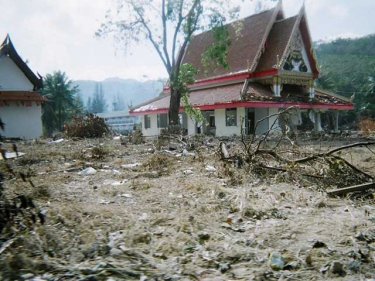
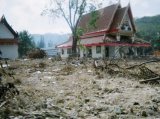
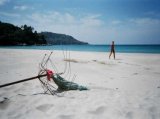
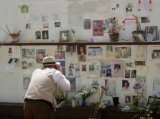
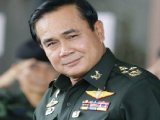
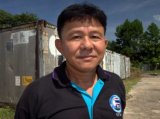
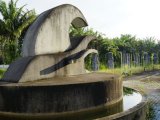



Absolute respect to all involved, i met a guy recently on a flight who was, he was by nature an impressive person. But how is it that others where able to assume the identity of some lost in the tsunami?. this question boggles me, really.
Editor: There were some interesting identity switches of the kind usually only found in novels. Some were caught. Others? Probably not.
Posted by Anonymous on December 14, 2009 18:54